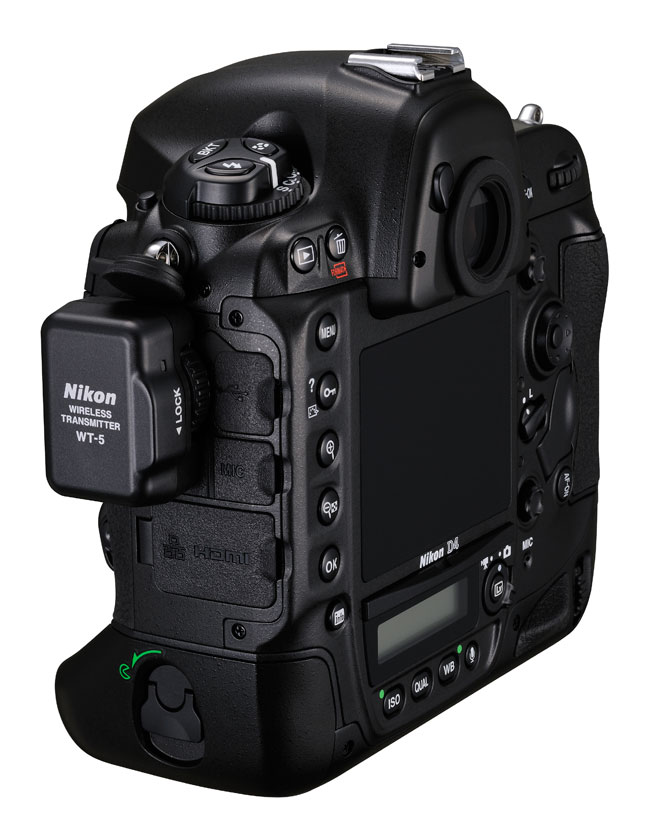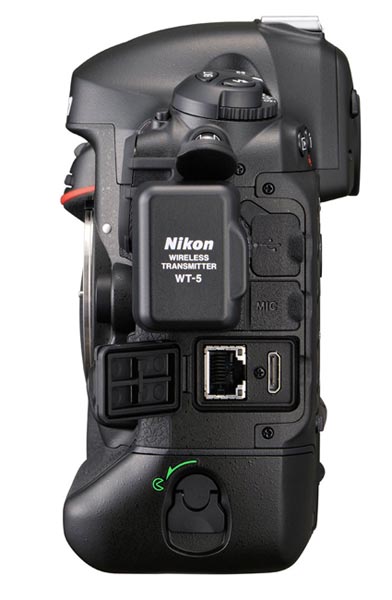Wired and Wireless File Transfer
When getting images to an editor during events that garner a lot of news coverage its not fast enough to finish shooting and courier off the media card. A great Nikon solution is to send the images wirelessly or tethered to a wired LAN. Select Nikon D-SLRs are compatible with optional wireless transmitters while the Nikon D4 offers fast and easy data transmission via built-in wired LAN, or using a newly designed lightweight optional wireless transmitter WT-5A.
The camera also gives the photographer the ability to import IPTC data into the camera’s memory before shooting, so that data is automatically attached to images as they’re shot in the camera. This saves critical time for editors as well as photographers.
Nikon now offers the WT-5A wireless transmitter, which is twice as fast as the Nikon WT-4A unit; and setup has been made easier than ever.
Image transmission mode: Transmit images to an FTP server or computer, either automatically or by manually selecting images.
PC mode: Operate the D4 D-SLR via Camera Control Pro 2.
HTTP mode: Using a web browser via computer or smart phone, show thumbnails of images stored in the camera’s memory cards, or make slide shows, view images, operate simple camera controls for remote shooting or begin live view shooting, including video, which is new to the WT-5A.
Simultaneous shutter release of multiple remote cameras: From one master camera, release up to 10 remote D4 and WT-5A combinations.
An optional Apple iPhone® application for remote control is also available for the WT-5A.
Wireless Transmission Utility
The Wireless Transmission Utility software is available in both Mac OS and Windows 7 versions.
Camera Control Pro 2 (optional)
This intuitive software lets you control camera settings and various features from a distance via computer. Aside from controlling basic camera settings, the software offers control opportunities including remote start and stop for movie shooting and switching between live view for stills and movies, all while using a computer monitor to see exactly what your camera sees. You can also display audio level indicators during movie shooting. And image files can be transferred using either Wi-Fi or an Ethernet connection.
[Editor’s Note: WT-5/A/B/C/D—differ only by the number of channels available to the photographer—and this is based on regions across the globe, as different countries have regulations governing the use of wireless frequencies. The WT-5 and the WT-5A/B/C utilize IEEE 802.11 a/b/g/n while the WT-5D utilizes IEEE 802.11 b/g/n. If you’re based in the USA, you will be using the WT-5A.]







